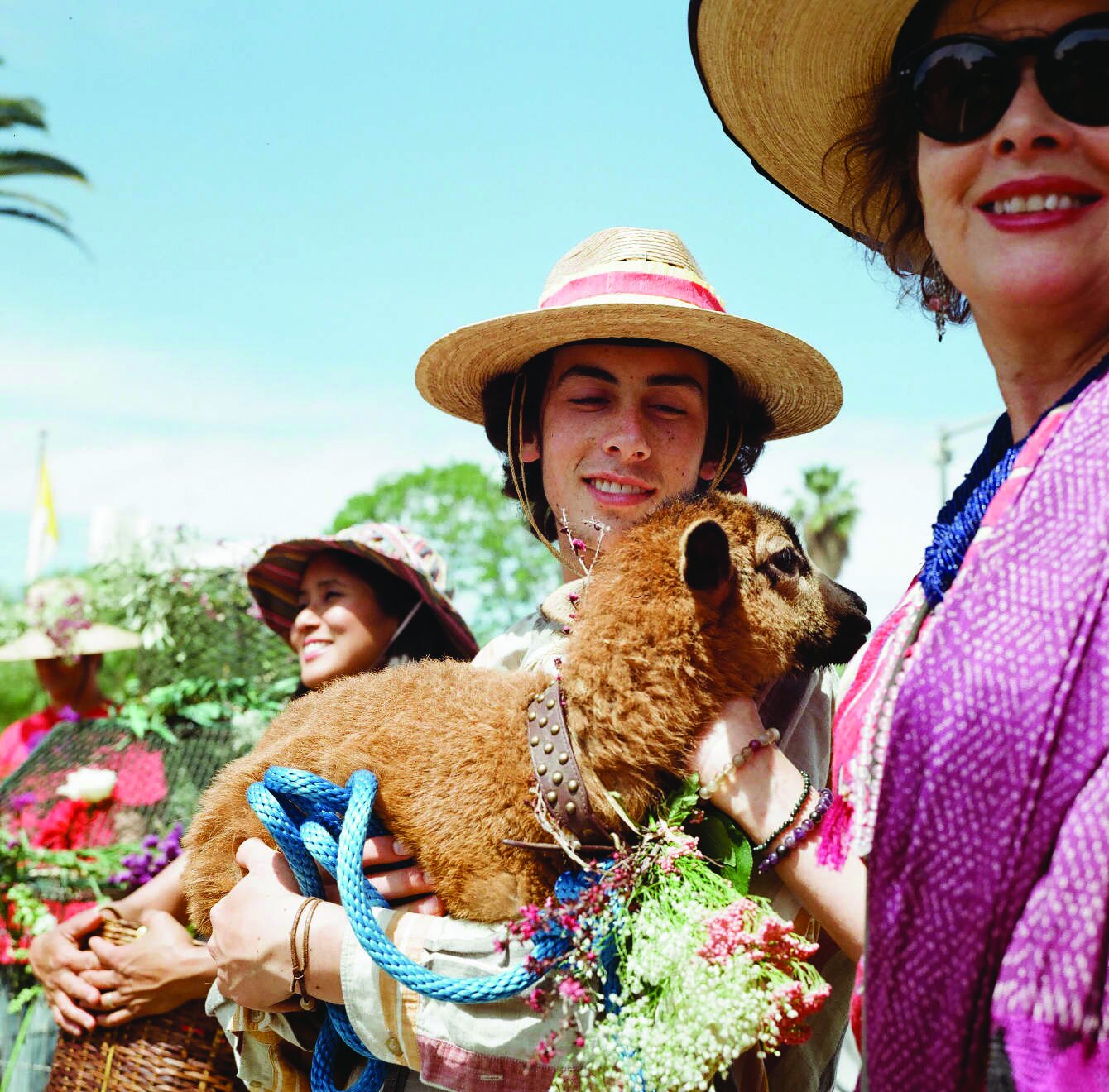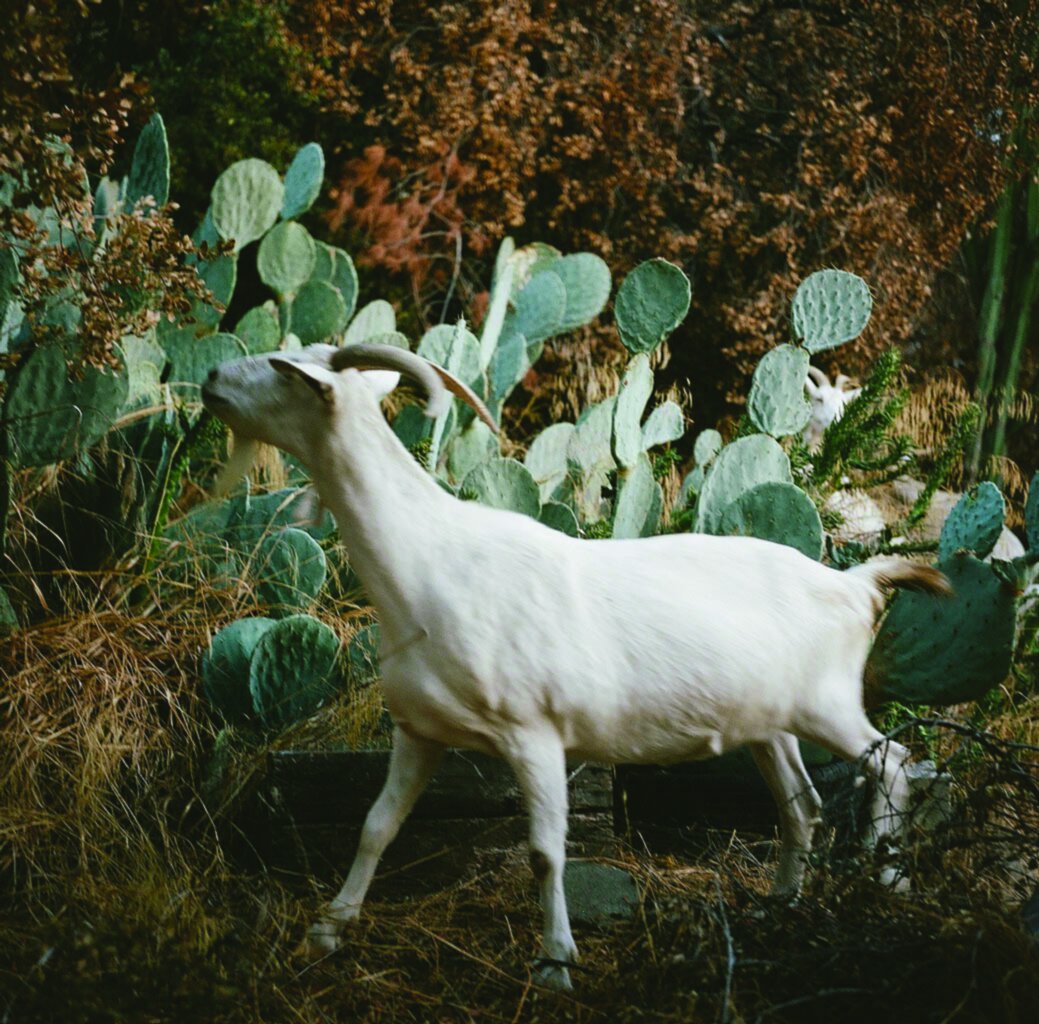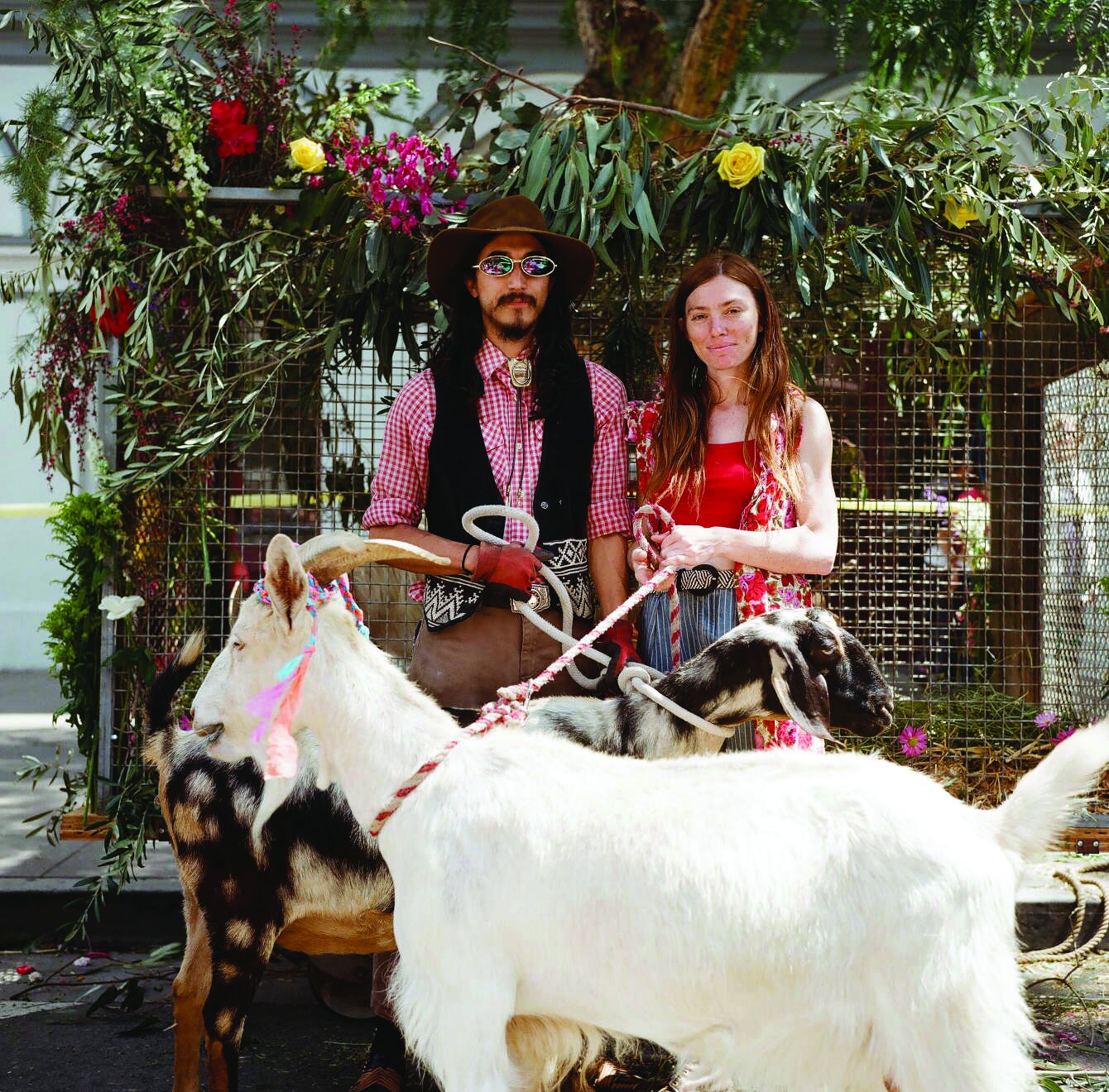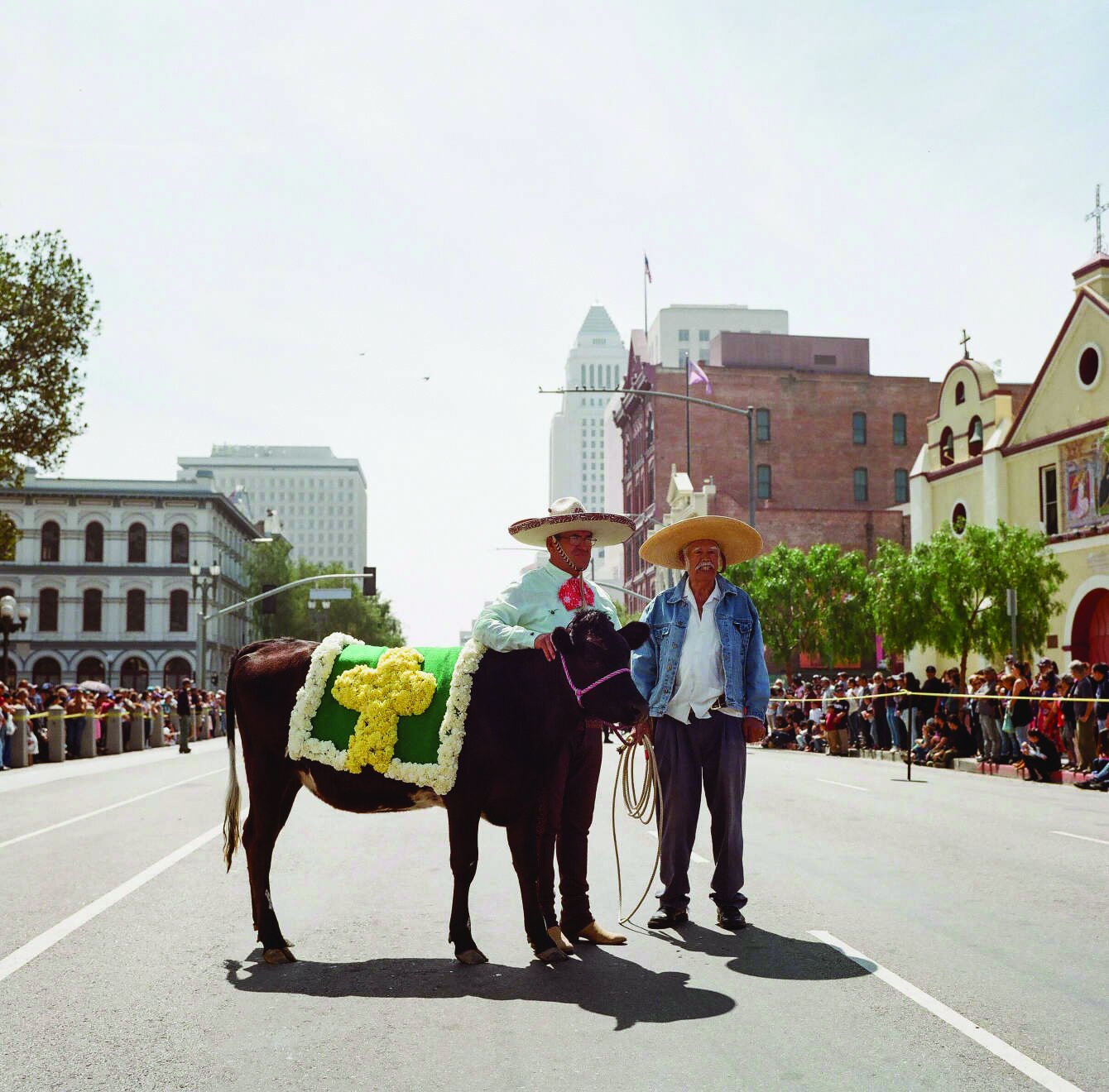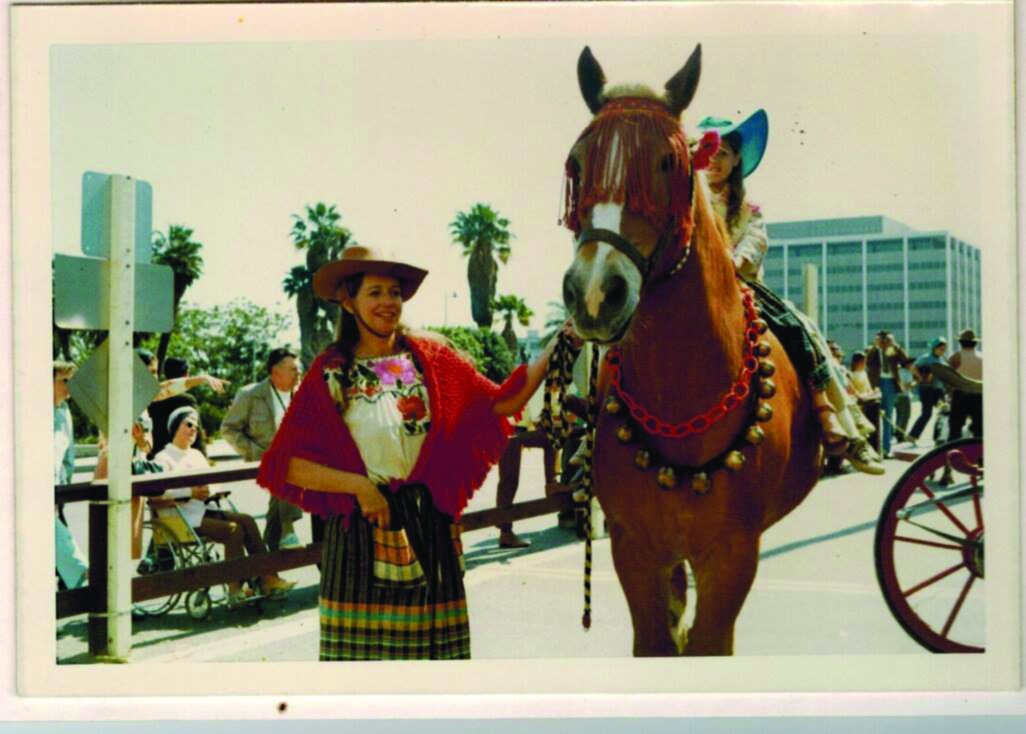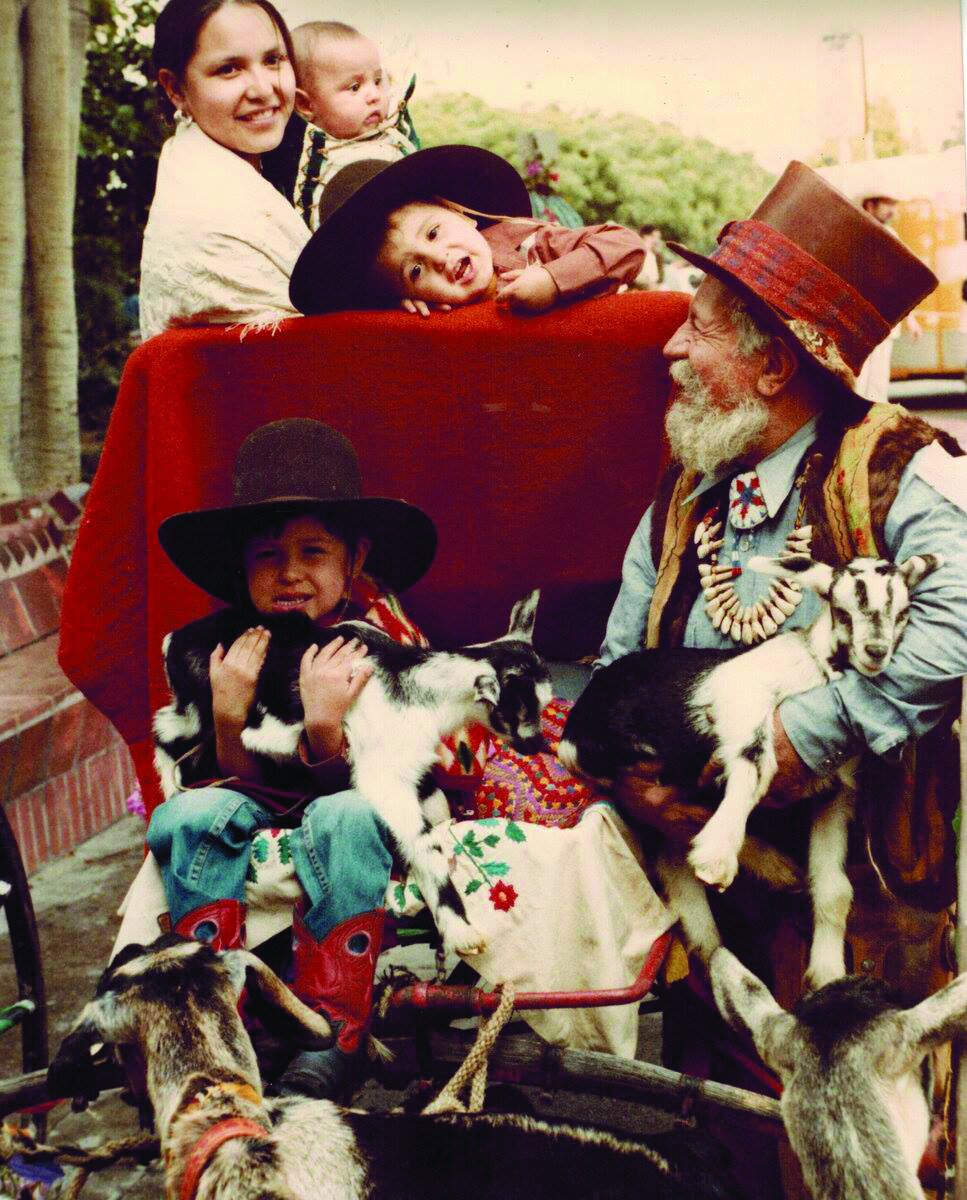Blessing of the Animals
“The Blessing of the Animals has been a part of Olvera Street since its founding in 1930, but its practice dates back to the 4th century, when San Antonio De Abad was named the patron saint of the animal kingdom and began to bless animals to promote good health.
In the early days of the pueblo, the priest from La Placita Church would bless the livestock of the farmers to keep them healthy and productive, benefiting the entire community. The practice continued when Olvera Street opened in 1930, but the animals were a little different. No longer was the blessing limited to cows, horses and goats, but the blessing began to include all animals, especially pets. Many four-legged friends are seen as members of the family, and the blessing is open to all. Whether they live on land, in water, or fly in trees, all animals are welcome to receive a blessing from Archbishop Jose Gomez”.1
One of the oldest participants of the Blessing of the Animals is the Zorthian Ranch. Artist and architect Jirayr Zorthian and his then wife Betty Williams purchased a plot of land up in the hills of San Gabriels in 1947 with intentions of ranching. Being artists and socialites meant they spent a good deal of time in the city as well. Jirayr had a deep interest in Mexican and Indiginous culture, as expressed through many of his artworks, which led him to connecting with the people of Olvera Street and being invited to participate in the annual tradition. Every year he brought his animals and family down, adorned in flowers and colorful Mexican garments, and throughout the years Zorthian became a staple component of the celebration along side the Aztec dancers, the Mariachi bands, the Spanish style ranchers walking around the historic square with a bull, and all the other parts of the gathering passed down through lineage.
One of the oldest participants of the Blessing of the Animals is the Zorthian Ranch. Artist and architect Jirayr Zorthian and his then wife Betty Williams purchased a plot of land up in the hills of San Gabriels in 1947 with intentions of ranching. Being artists and socialites meant they spent a good deal of time in the city as well. Jirayr had a deep interest in Mexican and Indiginous culture, as expressed through many of his artworks, which led him to connecting with the people of Olvera Street and being invited to participate in the annual tradition. Every year he brought his animals and family down, adorned in flowers and colorful Mexican garments, and throughout the years Zorthian became a staple component of the celebration along side the Aztec dancers, the Mariachi bands, the Spanish style ranchers walking around the historic square with a bull, and all the other parts of the gathering passed down through lineage.
Every year the day before Easter the animals of Zorthian Ranch are rounded up in mass to be carted down the mountains of the San Gabriels and into the urban metropolis of Los Angeles where they are paraded around the historic square of Olvera Street adorned with flowers and blessed by the Archbishop. Contrasting with the imagery of flowers and beautiful animals, is the often times chaotic and stressful process of getting the animals corralled and transported (picture pigs flying in the back of truck down the 110 freeway headed towards downtown, passerby’s bewildered and the pigs shocked with the annual memory of what an apartment complex is or what feeling of 50-55 mph is), hence the inside joke of calling this tradition “The Stressing of the Animals”.
The animals of the Zorthian Ranch are blessed in their own way. They get to live a life far from the cramped corrals and cages that most livestock in America are destined to experience. Their annual trip down to Olvera Street is the farthest they will ever travel. The goats, pigs, and rabbits of the Zorthian Ranch are born on the mountain, live their lives grazing on grass and olive branches, and either die of old age or are killed and processed to feed the humans that share the land with them. This is not so common these days, especially in Los Angeles. While this city was built on agriculture and small family farms, it has since lost the connection to this history. It is no longer accessible for folks in the city to raise their own livestock, let alone find or afford ethically raised meat in a local grocery store. The Blessing of the Animals is a reminder to honor the livestock many of us take for granted once it is placed in front of us on a plate. The evolution of industrial agriculture has led us to a place where the majority of meat eaten in America is filled with chemical enhancements, antibiotics and hormones, and the trauma the animals experience throughout their short lives. Perhaps the message of the Blessing of the Animals can help us remember what type of relationship is possible between humans and animals and the Earth. This relationship is a blessing in and of itself. ✌
Hannah Ray Taylor is a Los Angeles based urban farmer, educator, and artist who spends time gardening and volunteering with mutual aid organizations. Hannah is grateful for the relationships she has developed with the humans, animals, and land of the Zorthian Ranch. Thanks to Caroline Zorthian for her words in this piece and to the Zorthian family for their dedication to art and freedom". Check out her website:cargocollective.com/hannahwhoFIND OUT MORE ABOUT THE ZORTHIAN RANCH:
zorthianranch.com / @zorthianranch


